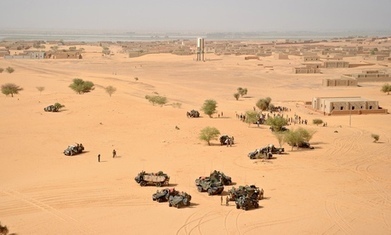"The Sahel’s ability to produce food is not keeping pace with its growing population, and global warming will only exacerbate the imbalance, according to a new study. Among the 22 countries making up the arid region in northern Africa, the population grew to 471 million in 2010 from 367 million in 2000, a jump of nearly 30%. As the population grew rapidly, the production of crops remained essentially unchanged. Using satellite images to calculate annual crop production in the conflict-ridden Sahel belt, south of the Sahara desert, the researchers then compared output with population growth and food and fuel consumption."
Tags: Africa, Sahel, population, environment, water, ecology, environment depend, weather and climate, sustainability, agriculture, food production.




 Your new post is loading...
Your new post is loading...







